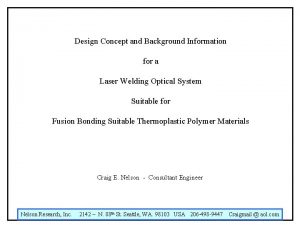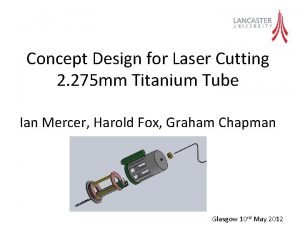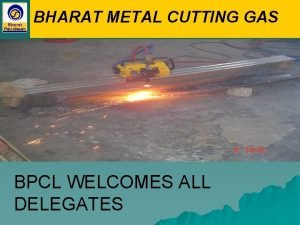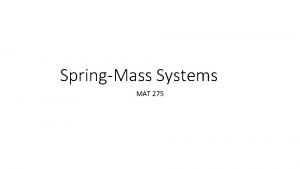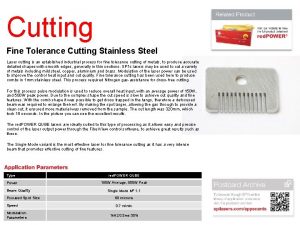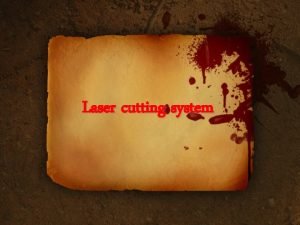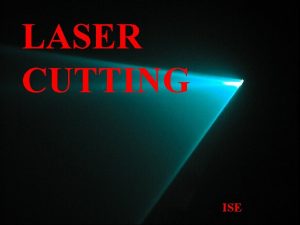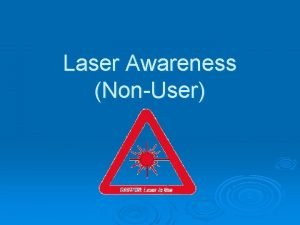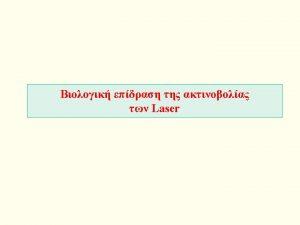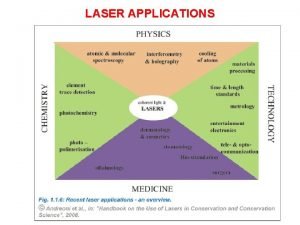Concept Design for Laser Cutting 2 275 mm









- Slides: 9

Concept Design for Laser Cutting 2. 275 mm Titanium Tube Ian Mercer, Harold Fox, Graham Chapman Glasgow 10 rd May 2012

Laser Cable Outer cover to keep Laser beam contained and safe Motor to drive laser round Collet to insert tube

Inner Part of the Design Mirror Laser Beam The inner part rotates around the tube.

View of all the parts separated out

The Laser beam deflected 90 degrees by a mirror allowing the beam to cut the whole way around the tube

Collet and Clamp to hold the tube in place

View from the back Motor

Feedback from Laser experts 1. I think this is a very clever design and certainly does have some promise. I'm concerned about the torsional twisting of the fibre, the coiled section at 90º to the cutter may take up the force rather than the fibre twisting The fibre optic being rotated my idea is for the laser to revolve 370 degrees and then come back, this will then stop the cable from too much twisting. 2. As you say we can have a tube around the beam and the mirror can be fitted inside the tube on the 90 degree bend. This would stop any stray beam coming off the mirror. 3. The outer casing can be made without the cut outs, and can be a totally concealed unit. 4. Marking the tube should not happen with a collet and the material although thin wall it is titanium and quite strong. 5. Your main concern about rigidity, we were going to have the cutting close behind to the collet this will give the cutting point more support.

• • We would generally do this without rotating the fiber – we would have the fiber entering on- axis and stationary. We would then deflect and steer the beam to describe a circle on the circumference about where your mirror is. Several ways of doing this, but a rotating wedge/prism is generally preferred. There are then two options for the mirror. One is a spinning plane mirror similar to what you have drawn. The more elegant solution is a fixed “conical” mirror where the beam is reflected off the inside of the cone. With this latter design, the only thing moving within the cutting-head is the spinning wedge which is both on the main axis (typically mounted on a hollow-shaft motor) and can be easily made to be balanced. It also keeps the weight of the system down which makes clamping onto your thin-walled tubing more feasible. The downside of the cone is that it is a bespoke component, and it has some cylindrical focusing effect which needs to be accommodated in the optical design. Spinning the beam around the tube several times is likely to give a much better cut than a backwards-forwards 360 -degree move. The SPI laser is a good choice for this application, and we would propose to use this laser in the cutting/marking system. To this end we would be liaising with Greg and others at SPI on the specific laser choice, specification and any particular optical-mounting or laser-control details that would be required, but I think that it would be Op. Tek leading this with SPI supporting. The disadvantage of the “elegant” cutting system, is that it really is designed specifically for that job, and so is not suitable for alpha-numeric marking as well. Could you tolerate a solution where you had a separate marking system (could be an “interchangeable process head”, although it might prove more convenient for this to simply be a separate system)? I realise that it is impossible to make decisions without at least indicative prices and timescales, and so I would suggest that we work on these to get something to you next week.
